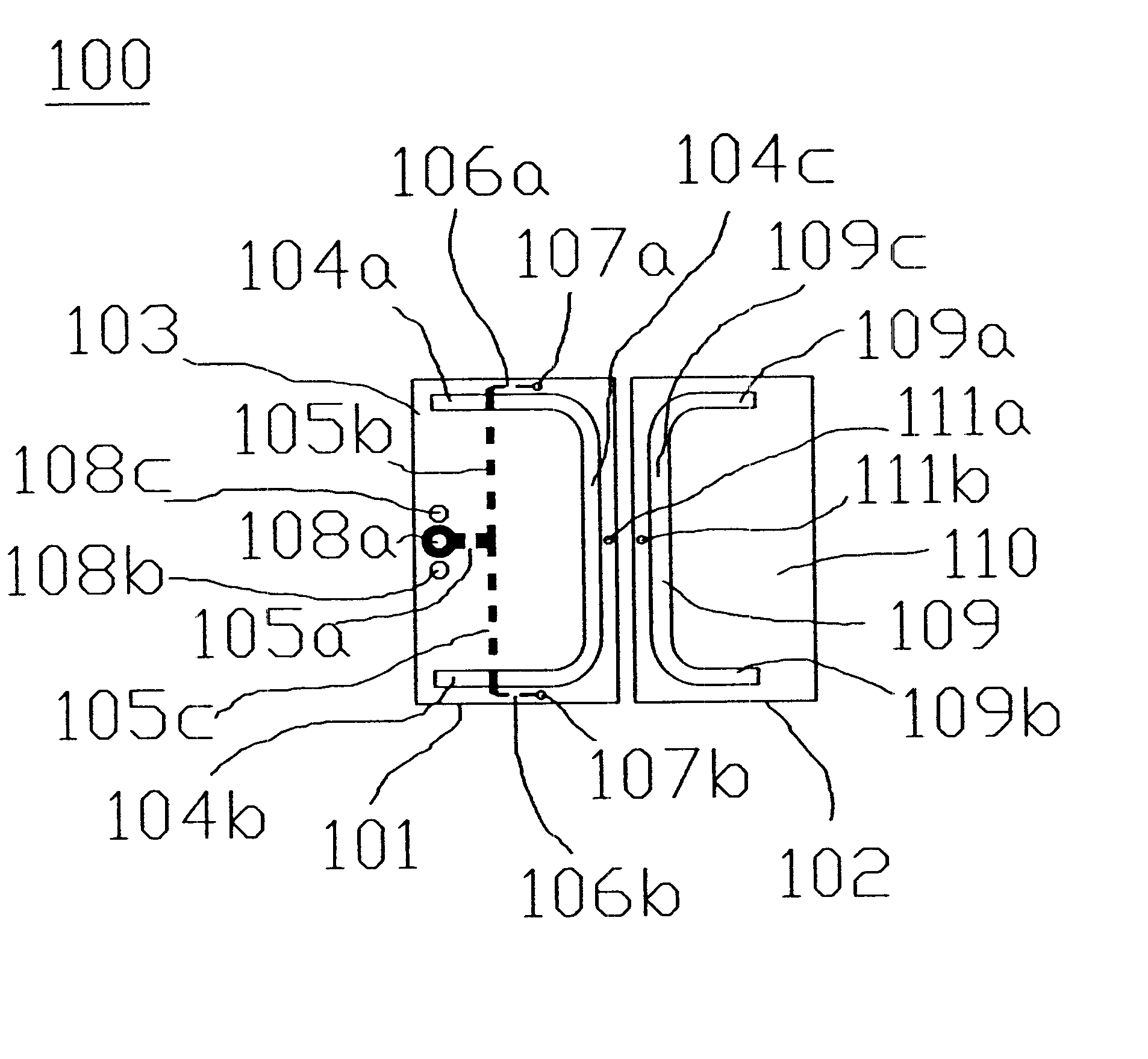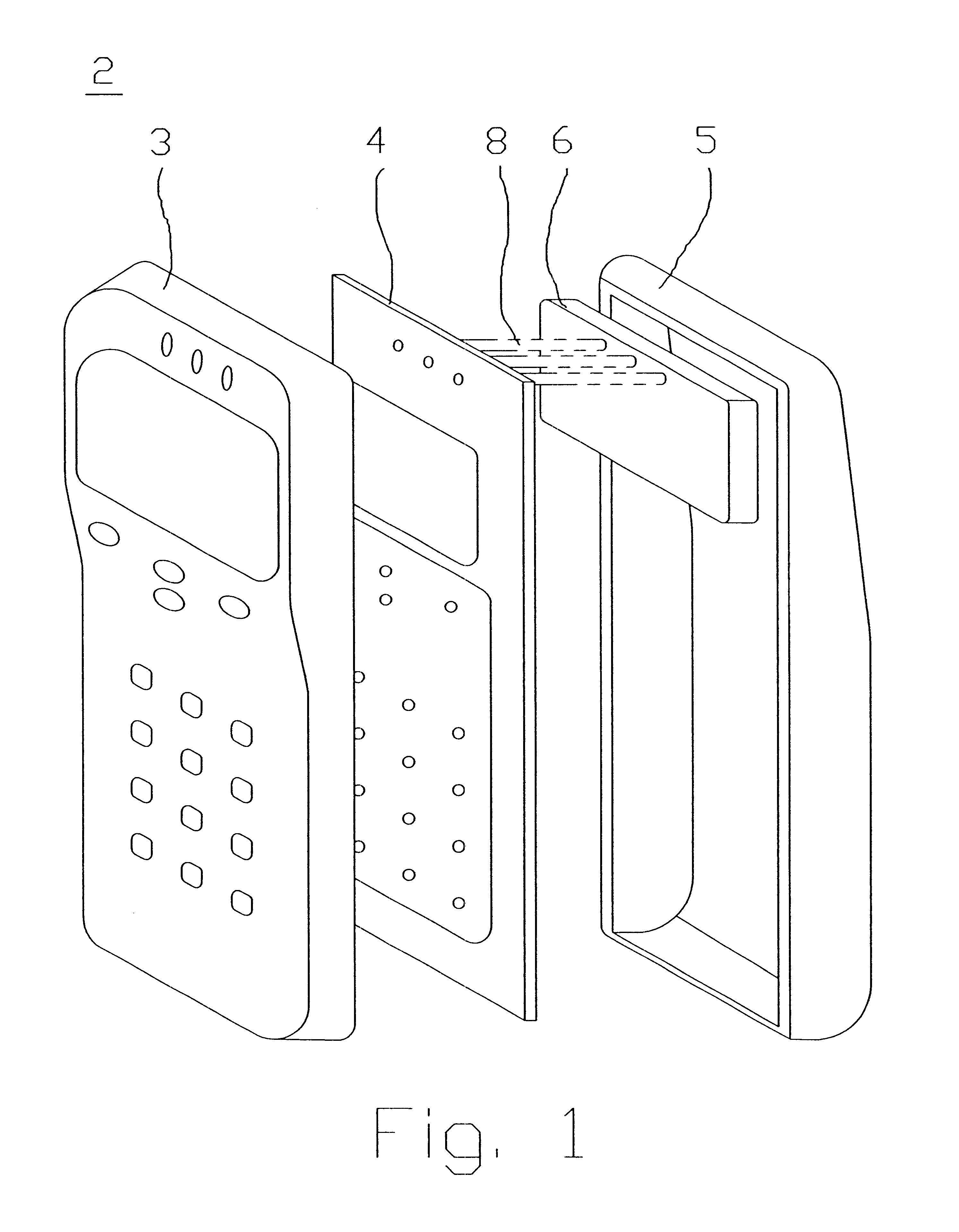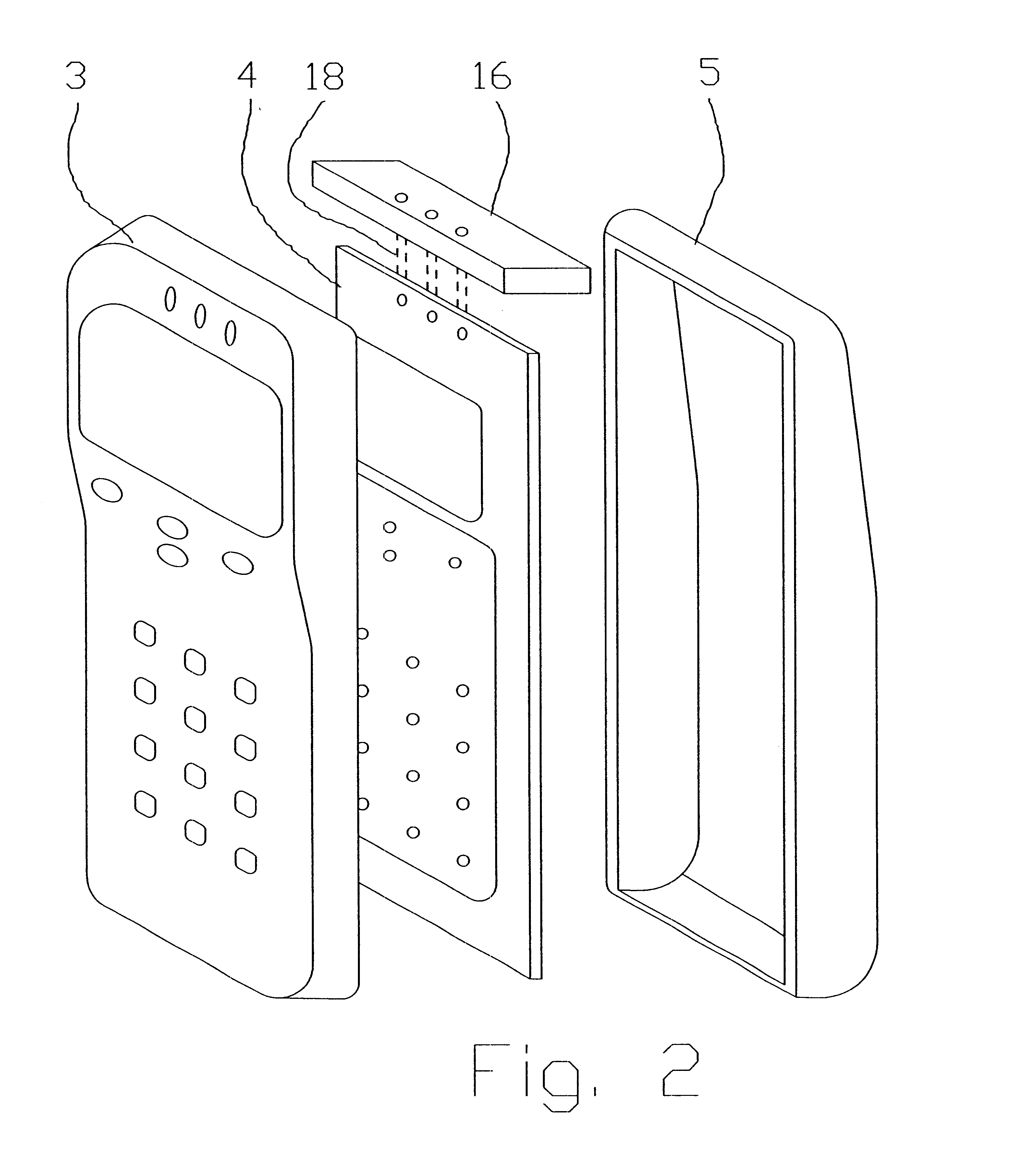Internal antennas for mobile communication devices
a mobile communication device and antenna technology, applied in the direction of antennas, slot antennas, antenna details, etc., can solve the problems of reducing the efficiency of small antennas, requiring higher power supply, and impracticality of dimensions, and achieve good results
- Summary
- Abstract
- Description
- Claims
- Application Information
AI Technical Summary
Benefits of technology
Problems solved by technology
Method used
Image
Examples
Embodiment Construction
FIG. 1 illustrates the main components of a mobile communication device, such as a cellular telephone handset, constructed in accordance with the present invention. Such a device, generally designated 2, includes a front cover 3, a main PCB (printed circuit board) 4, and a back cover 5 usually also containing the battery (not shown). The foregoing components may be conventional, and therefore further details are not set forth.
In accordance with the present invention, the mobile device 2 includes an internal antenna, generally designated 6, disposed between the main PCB 4 and the back cover 5 and connected to the PCB by feeding pins 8. In the embodiment illustrated in FIG. 1, the internal antenna 6 is located substantially parallel to the plane of the main PCB 4 to which it is connected by the feeding pins 8. FIG. 2 illustrates a variation wherein the internal antenna, therein designated 16, is disposed substantially perpendicular to the main PCB 4 to which it is connected by feeding...
PUM
 Login to View More
Login to View More Abstract
Description
Claims
Application Information
 Login to View More
Login to View More - R&D
- Intellectual Property
- Life Sciences
- Materials
- Tech Scout
- Unparalleled Data Quality
- Higher Quality Content
- 60% Fewer Hallucinations
Browse by: Latest US Patents, China's latest patents, Technical Efficacy Thesaurus, Application Domain, Technology Topic, Popular Technical Reports.
© 2025 PatSnap. All rights reserved.Legal|Privacy policy|Modern Slavery Act Transparency Statement|Sitemap|About US| Contact US: help@patsnap.com



